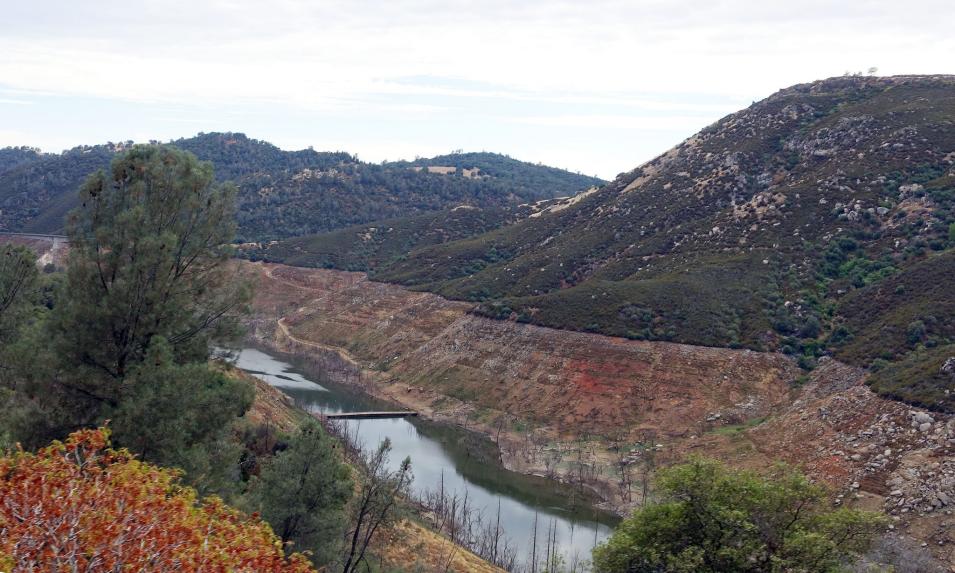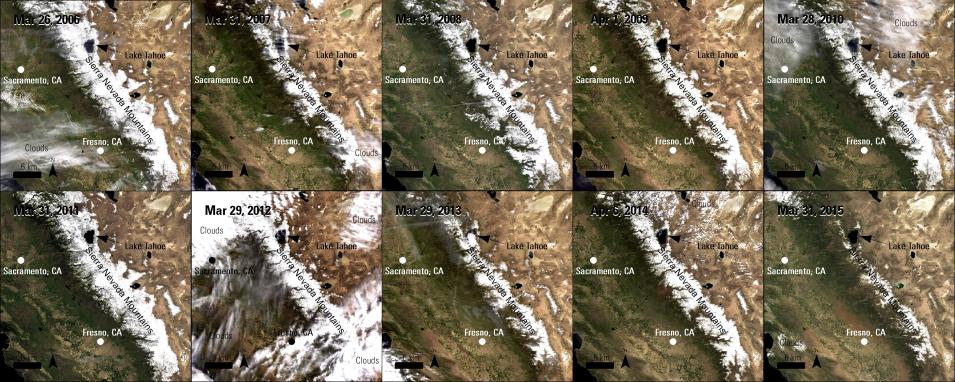References
Article References
Belmercheri, S., Babst, F., Wahl, E.R,. Stahle, D.W., and Trouet, V., 2015, Multi-century evaluation of Sierra Nevada snowpack: Nature Climate Change, September 14, 2015, accessed September 16, 2015.
Brice, A., 2015, Is drought killing California’s giant sequoias?: Berkeley Research News, August 6, 2015, accessed August 18, 2015.
California Department of Water Resources, 2015, California’s most significant droughts: Comparing historical and recent conditions, accessed September 11, 2015.
Carlson, D., Scott, E., and Macias, M., 2015, Sierra Nevada snowpack is virtually gone; Water content now is only 5 percent of historic average, lowest since 1950: California Department of Water Resources News Release, April 1, 2015, accessed September 11, 2015.
State of California, 2015, New Melones – Storage conditions as of June 28, 2015: California Data Exchange Center, accessed September 15, 2015.
State of California, 2015, Top story: California state climatologist: Do not count on El Niño to end drought: State of California Web page, accessed August 18, 2015.
Natural Resources Conservation Service, 2015, Snow water equivalent percent of official median [map], accessed September 11, 2015.
U.S. Geological Survey, 2015, The California drought: California Water Science Center, accessed September 4, 2015.
U.S. Geological Survey, 2015, Snowmelt – The water cycle: The Water Cycle – USGS Water Science School Web page, accessed September 11, 2015.
Image References
Granule IDs
- MOD09GA.A2006085.h08v04.005.2008085173123
- MOD09GA.A2006085.h08v05.005.2008085162715
- MOD09GA.A2007090.h08v04.005.2007094102912
- MOD09GA.A2007090.h08v05.005.2007094101645
- MOD09GA.A2008091.h08v04.005.2008093175250
- MOD09GA.A2008091.h08v05.005.2008093191619
- MOD09GA.A2009091.h08v04.005.2009094000208
- MOD09GA.A2009091.h08v05.005.2009094003604
- MOD09GA.A2010087.h08v04.005.2010089160905
- MOD09GA.A2010087.h08v05.005.2010089163601
- MOD09GA.A2011090.h08v04.005.2011094201431
- MOD09GA.A2011090.h08v05.005.2011094203321
- MOD09GA.A2012089.h08v04.005.2012093192229
- MOD09GA.A2012089.h08v05.005.2012093192234
- MOD09GA.A2013088.h08v04.005.2013090083213
- MOD09GA.A2013088.h08v05.005.2013090083135
- MOD09GA.A2014096.h08v04.005.2014098060732
- MOD09GA.A2014096.h08v05.005.2014098060512

